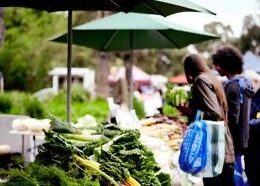Regenerative Agriculture Resource
An introduction to regenerative agriculture
Regenerative agriculture is a new concept for many, but there are some fantastic resources that can help you understand what regenerative agriculture is, how people are farming regeneratively, and what their impact is.
Locally, Catchment Management Authorities are doing some excellent work creating resources and learning opportunities for farmers keen to transition to regenerative agriculture. Check out this great little series of explainer videos on regenerative agriculture for farmers prepared by Bass Coast, South Gippsland and Western Port Catchment landcare networks and the Mornington Peninsula Shire Council.
In our living Agro-ecology & Regenerative Agriculture Knowledge Commons report we said:
What is regenerative agriculture?
There are diverse ideas about what regenerative agriculture is. The core idea is the improvement of ecological function. Globally, the language of agro-ecosystems and agro-ecology is favoured, whereas “regenerative” farming seems to be popular in places like Australia and the United States. Agro-ecological principles discussed more fully in the literature will be applied differently across different land and production contexts but basically boil down to:
- avoiding/minimising tillage;
- eliminating bare soil;
- fostering plant diversity;
- encouraging water percolation into the soil; and
- integrating livestock and cropping.
Effects of regenerative agriculture
Regenerative agriculture reduces/replaces requirements for external inputs by building ecological function (e.g. nutrient cycles) overtime. If these strategies are applied appropriately to the context and after a transition period, a regenerative farmer should be able to point to evidence of functional outcomes, at a minimum:
- increased above- and below-ground species diversity;
- increased soil organic carbon;
- increased water infiltration or water holding capacity;
- increased soil aggregate stability; and
- increased microbial biomass.
Determining factors
Ultimately, regenerative agriculture’s contribution to carbon drawdown will be determined by three factors:
- The area of green plant growth.
- The time or longevity of that green plant growth (i.e year round) and its drawdown of carbon.
- The degree to which the carbon-fixed is bio-converted into stable soil carbon rather than oxidised back into CO2 by burning or oxidative soil management (e.g tillage; bare soil).
“Regenerative agriculture recognises that farms are part of a larger ecosystem, and that agricultural activities must not just make withdrawals from this larger system, but also pay into it. The overall ambition shifts from extractive, linear thinking that prioritises high yields above all else, to establishing cycles of regeneration” – Nick Jeffries
Application to agricultural systems
Some people define regenerative agriculture as only applying to annual cropping systems (eg. Drawdown) with other names for perennial based regenerative systems. We do not see need for this distinction, although there is a very strong relationship between perenniality and ecological function. Which regenerative systems people choose to implement will depend on many factors including context, goals and skill/knowledge. This is discussed further in the later pages of our report, particularly under the Production Systems and Challenges of Measuring Complexity sections.
Latest Resources
Can we help?
Have an idea, a project or a question? Want help using the Open Food Network software? Get in touch and find out how we can help you with it.
Keep in touch
Join us
Create a listing, shop or group directory on the Open Food Network. Tell me more!

Read our Terms and conditions | Find us on GitHub
Open Food Network is a free and open source software platform. Our content is licensed with CC BY-SA 3.0 and our code with AGPL 3.
We take good care of your data. See our cookies policy
Open Food Network respectfully acknowledges the traditional custodians of the unceded lands on which we meet, work and live. We pay our respects to their Elders, past, present and emerging and acknowledge their deep spiritual relationship to country.




